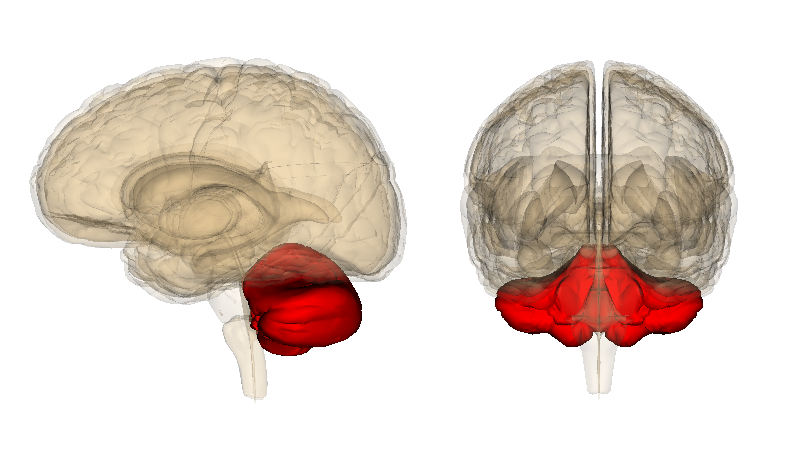Learning is an ability that humans and other animals possess that involves acquiring new understanding, behavior, knowledge, attitudes, values, and preferences. In a recent study, a team of researchers explores how this complex process happens in the brain.

(Photo: Wikimedia Commons/ Life Science Databases(LSDB))
Little Brain
The cerebellum, located at the back of our heads, is a brain structure that plays an important role in learning. It literally means "little brain," despite the fact that it contains more than half of the brain's neurons.
The cerebellum is vital in coordinating movements and balance and helping a person perform daily tasks smoothly. It is also responsible for the learning process that allows a person to associate sensory cues with specific actions.
In order for learning to take place, the cerebellum constantly monitors the outside environment and the outcome of movements that a person makes within it. When a person makes a mistake, information about the errors can be used to adjust the strength of brain connections. Over time, this adjustment changes an individual's behavioral responses to specific cues.
However, experts are still puzzled by the exact mechanism by which the "error" or "teaching signals" are represented within the brain to trigger learned changes in behavior. How we adapt our actions based on past experiences is still being defined.
READ ALSO: Nanowire Networks Mirror How the Human Brain Learns and Remembers, Study Says
Role of Zombie Neurons
At the Champalimaud Foundation, a team of researchers provides compelling evidence regarding the role of climbing fibers, a special class of cerebellar inputs, in allowing associative learning to occur. Led by Dr. Tatiana Silva, the researchers examined how learning is affected by climbing fibers and their targets called Purkinje cells. They designed an experiment involving mice that undergo a common learning task called eyeblink conditioning.
In this learning task, a mouse learns to blink in response to a certain signal which precedes an event. The animals display associative learning, linking a sensory signal with an adaptive movement response. The team used optogenetics, a technique that works like a highly precise remote control for brain cells. In this study, Silva and her colleagues used light to turn on or off certain cells of interest at extremely specific times.
After looking more closely at some of their data, the scientists discovered an unexpected twist. They used genetic tools to express a light-sensitive protein called Channelrhodopsin-2 (ChR2) in those neurons to control climbing fiber activity using optogenetics. They discovered that the mice failed to learn thoroughly when teaching the ChR2-expressing animal using the traditional air puff method.
It turns out that introducing ChR2 into the climbing fibers altered their natural properties and prevented them from responding appropriately to standard sensory stimuli such as air puffs. As a result, the animal's ability to learn is completely blocked.
While the climbing fibers remained spontaneously active and were functional, their altered encoding of sensory stimuli left the mice unable to learn the task. This led the research team to call them "zombie neurons" since they are functionally alive but are not interacting with the brain circuit as usual.
RELATED ARTICLE: Brain Cells Destroyed as Neurons Learn Faster; DNA Breaks May Provide Answer to Genetics
Check out more news and information on Learning in Science Times.














